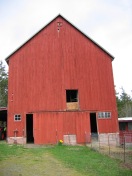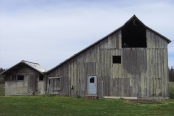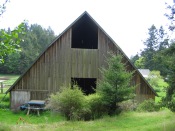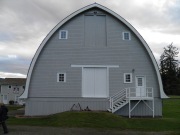DESCRIPTION OF ROOF TYPES
Barn forms and types are generally classified by their roof shape: Gambrel (both English and Dutch), Gable, Broken Gable, Salt Box, Dutch, Gable on Hip, Gothic and Western/Monitor. Beyond the basic roof classification, other characteristics, such as plan (center drive or gable entry), siting (bank), construction type (pole post and beam, timber frame, or truss), or use (multiuse, diary, beef, sheep, horse or mule, poultry, or even fruit), help define the barn. The Inventory is divided up into the following basic categories:
Gambrel. A symmetrical roof with two slopes on each side. In English Gambrel, the eaves extend straight past the walls; on a Dutch Gambrel, the eaves flare slightly upward past the walls.
Gable. A symmetrical roof with one slope on each side.
Broken Gable. A gable roofed-structure with sheds or lean-tos added on both sides to the eaves of the gable to form a ‘broken’ slope.
Salt Box. A gable-roofed structure with a shed or lean-to added on one side, integral to that slope.
Dutch. A gable-roofed structure where the slope projects all the way down to the 1st floor.
Gable-on-Hip. A gable-roofed structure with shed or lean-tos on all four sides.
Gothic. A roof formed by gothic or ‘pointed’ trusses forming a ridge line.
Western/Monitor. A gable-roofed structure with lower sheds or lean-tos on both sides, leaving side walls exposed and often windows added to form a monitor.







